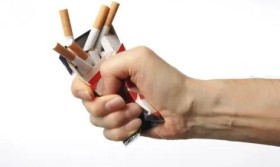How to Rewire Your Day: Quit Smoking Through Strategic Habit Shifts
For millions of smokers, the act of lighting a cigarette is far more than a nicotine delivery system; it is a deeply woven thread in the fabric of their daily lives. The addiction is not just physical but behavioral, anchored by a powerful set of routines and environmental cues. Quitting, therefore, is not merely a battle of willpower against chemical craving. It is a process of rewiring your day, of consciously dismantling the old architecture of your habits and building a new, healthier one in its place. The most effective and sustainable path to becoming a non-smoker is to master the art of the habit shift.
Understanding the Habit Loop: Cue, Routine, Reward
At the heart of every habit, including smoking, lies a neurological loop identified by researchers as the Habit Loop. It consists of three components:
- Cue: A trigger that tells your brain to go into automatic mode. This could be a time of day, an emotional state, a location, or the presence of specific people.
- Routine: The behavior itself—the physical act of smoking.
- Reward: The positive feeling the brain associates with the behavior, which helps it remember the loop for the future. For smoking, this is the nicotine rush and the momentary relief from stress or boredom.
To break a bad habit, you cannot simply erase the loop. You must change the routine while keeping the same cue and delivering a similar reward. This is the golden rule of habit change.
Mapping Your Smoking Triggers
The first critical step is to become a detective of your own behavior. For a few days before you quit, carry a small notebook or use your phone to log every cigarette. Don't judge, just observe. Note down:
- Time: Was it right after waking up? With your morning coffee? After a meal? During your afternoon break?
- Location: In your car? On the balcony? Outside the office?
- Emotional State: Were you stressed? Anxious? Bored? Celebrating? Relaxing?
- Social Context: Were you with specific friends who smoke? Having a drink? On a phone call?
This log will reveal your personal trigger patterns. You cannot change what you are not aware of.
Strategic Habit Shifts for Common Smoking Cues
Once you've identified your triggers, you can engineer new routines. Here are practical habit shifts for the most common smoking cues:
1. The Morning Coffee Cigarette
This is a powerful trigger combining taste, ritual, and a stimulant (caffeine).
Habit Shift: Drastically alter your morning routine. If you always had coffee at the kitchen table, move to a different room or drink standing up. Better yet, replace coffee with a different warm beverage like green tea or chicory root coffee for the first few weeks. The novel taste helps break the automatic association. Immediately after your drink, engage in a new activity: a five-minute meditation, a short walk around the block, or reading a news article. This creates a new "anchor" behavior.
2. The Post-Meal Cigarette
This cue is about the feeling of a finished meal and the desire to complete the experience.
Habit Shift: The moment you finish eating, immediately get up and brush your teeth. The strong minty flavor is incompatible with smoking and provides a clean, satisfying feeling. Alternatively, go for a brisk five-minute walk. This not only distracts you but also utilizes the energy from your meal positively, reinforcing your new healthy identity.
3. The Work Break Cigarette
This is often less about nicotine and more about stress relief, a change of scenery, and socializing.
Habit Shift: Still take your break, but change the routine. Instead of going to the smoking area, take a "walking break." Walk around the block, up and down a few flights of stairs, or just around the building. Use this time to call a non-smoking friend or listen to a motivating podcast. The physical movement is excellent for stress relief and provides a mental reset.
4. The Stress or Boredom Cigarette
This emotional cue is one of the toughest, as smoking becomes a coping mechanism.
Habit Shift: You need a quick, accessible tool to short-circuit the stress response. Practice the 4-7-8 breathing technique (inhale for 4 seconds, hold for 7, exhale for 8). This calms the nervous system instantly. For boredom, keep a "fidget kit" handy: a stress ball, a glass of ice water to sip, a puzzle game on your phone, or a piece of gum. The goal is to engage your hands and mouth in a new, non-destructive way.
5. The Social or Alcohol-Related Cigarette
Alcohol lowers inhibitions and strengthens habitual urges, making this a high-risk situation.
Habit Shift: For the first month of quitting, it is wise to avoid alcohol entirely. If you are in a social setting where others are smoking, have a non-alcoholic drink in your hand at all times—a glass of tonic with lime, iced tea, or soda. This gives you something to do with your hands. Also, don't be afraid to politely excuse yourself from the smoking area if the temptation becomes too strong.

Building and Reinforcing Your New Identity
The final piece of the puzzle is belief. Habit change requires you to see yourself in a new light. Every time you successfully choose a deep breath over a cigarette, or a walk over a break outside, you are casting a vote for your new identity as a non-smoker.
Celebrate these small victories. The reward for your new routine must be felt. Acknowledge the pride of resisting a craving. Feel the health benefits—the improved breathing, the better taste of food, the extra money in your wallet. These positive reinforcements solidify the new loops in your brain.
Quitting smoking is a journey of transformation built one habit shift at a time. By strategically changing the routines around your deepest cues, you don't just fight the addiction—you outgrow it, building a life where smoking simply no longer fits.










